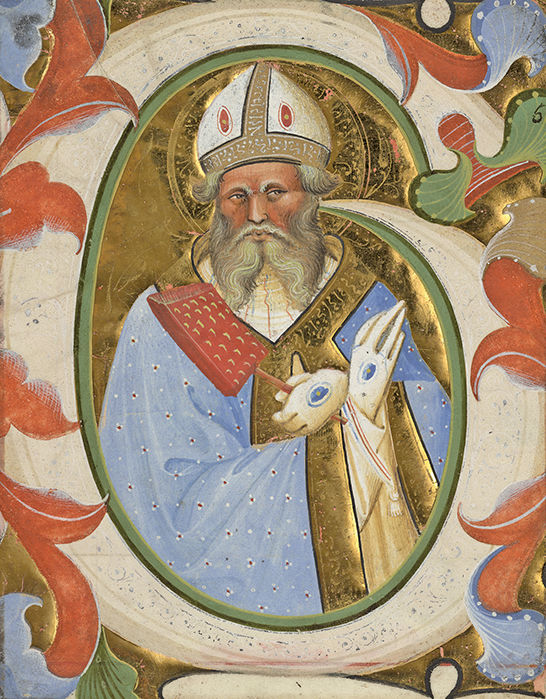“The belief that the ‘eyes are the windows to your soul’ came from the Middle Ages and that by looking at an image of a saint or a biblical person, you would be connected to that soul in heaven or divine figure. Images then became windows into the spiritual world,” says Bryan Keene, assistant curator of manuscripts who co-curated the current exhibition at the J. Paul Getty Center, “Renaissance Splendors of the Northern Italian Courts.” Former Getty graduate intern Christopher Platts co-curated the exhibit as well.
The exhibition, which closes on June 21, brings together 25 works — illuminated manuscripts, prayer books, choirbook pages, paintings, a drawing and an album of drawings from the Getty’s impressive manuscripts collection.
Bringing depth to the showing is a virtual exhibition of more than 100 additional illuminated manuscripts from institutions in Ferrara, Mantua, Milan, Venice and Verona, bastions of the Northern Italian courts. The accompanying online exhibition makes it possible for people across the globe to see remarkable artwork up close for free and/or continue the museum exploration in the comfort of their own home.
Indeed, this kind of easy access to images would be mind-boggling to someone from the Middle Ages, says Keene. Images and color were prized experiences because most people lived in a monochromatic world free of billboards, movies or iPhones.
“If you wanted to encounter pictures or color, you would go to church, not just for your soul, but to see beautiful images,” he says, pointing out that the abundance of people back then could not read, making visual art especially important. “At church you would see stained glass, the frescos, even the vestments told stories through pictures.”
The vast majority of objects at this showing come from liturgical books, choir pages and prayer books and feature images of saints, scenes from the life of Christ and biblical stories that were created between 1400-1600 in the fashionable Northern Italian cities.
Walking into the Getty gallery space invites a hushed sense; the low lighting creates a mysterious aura and guests are drawn into this quiet and contemplative room. The lighting is kept minimal to avoid damaging the pages of the manuscripts which were created out of cow, goat and sheep skins.
An informative step-by-step exhibit on how manuscripts were created gives museum-goers a deeper sense of the time and artistry involved in producing these “miniature paintings.”
Walking through the exhibition, Keene explains how the somewhat recent practice of cutting apart illuminated manuscripts for resale resulted in book pieces being dispersed all over from private collections to museum archives. Still, the Getty does have complete volumes of large choirbooks and small personal prayer devotionals.
Delving into the pieces, Keene describes the northern Italian courts as being some of the wealthiest and most sophisticated in Europe. Patrons commissioned volumes from innovative artists who created works of remarkable elegance.
Visitors are encouraged to look nose-close into the manuscript pages to discover the intricate detail, craftsmanship and imagination that went into these books. Often viewers can see through the image to the “under drawing” or the initial concept drawings that led to the final images.
Holy people are everywhere here. “David Lifting Up His Soul To God” portrays the Old Testament King in an otherworldly, darkened mountain landscape. He’s holding a harp in his left hand but raises a small white figure (his soul) up to God who is framed by a triangle with rays of gold.
When singers observed this choirbook page, they too were encouraged to “direct their meditation to heaven just as King David did,” says Keene.
Likewise, the portrait of St. Blaise depicts a popular motif of presenting a saint along with their instrument of martyrdom (in this case a wool carder’s brush).
“Scenes of martyrdom were very popular, not just as a reminder that there was a time when it wasn’t safe to be a Christian but also as a model of life to come, the sacrifice and having your life be that imitation of Christ,” explains Keene.
Nearby, St. Jerome is shown extracting a thorn from the paw of a lion that is subservient and grateful for the help. The bold colors and shimmering gold are breathtaking.
Again, Keene comes back to the central message of these illuminated images and their spiritual importance: The eyes.
“St. Blaise and St. Jerome are looking directly at the reader, they are engaging you, challenging you,” he says. “They are looking into your soul.”

